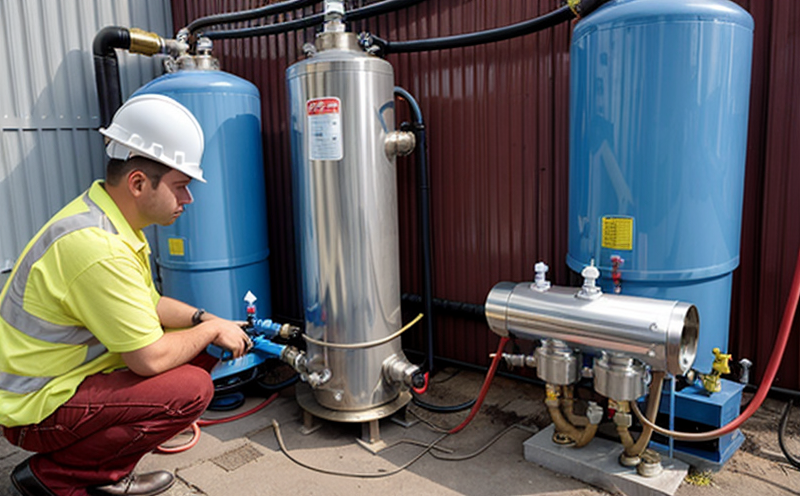Inert gas suppression system inspection
Ensuring that fire safety and protection systems are in optimal working condition is paramount in safeguarding lives, property, and assets. Inert gas suppression systems play a critical role in extinguishing fires by displacing oxygen from the environment, thereby preventing combustion. The integrity of these systems must be regularly inspected to ensure they meet international standards and can perform reliably when needed.
The inspection process for inert gas suppression systems is intricate and requires specialized knowledge and equipment. The system typically consists of a nitrogen or argon-based agent stored in high-pressure cylinders, piping networks, nozzles, and control panels. These components must be rigorously examined to confirm they are free from leaks, corrosion, and other forms of degradation.
During an inspection, the primary focus is on verifying that the system can operate as intended under real-world conditions. This involves simulating a fire event by releasing a small amount of inert gas into the protected area while monitoring the performance parameters. The inspection also includes checking for proper connections between components and ensuring that all control mechanisms function correctly.
International standards such as ISO 17500-4:2018 provide guidelines on testing, verification, and compliance assessment in fire protection systems, including inert gas suppression systems. Compliance with these standards ensures that the system is designed, installed, and maintained to meet rigorous safety requirements.
The inspection process typically involves several key steps:
- Visual Inspection: This step includes examining all visible components of the system for signs of wear, corrosion, or damage. Any discrepancies are documented for further investigation.
- Pressure Testing: The piping network is pressurized to test its integrity and seal against leaks. This ensures that the gas can be safely delivered when needed.
- Nozzle Inspection: Each nozzle is checked for obstruction, proper alignment, and correct spray pattern. Proper function of nozzles is crucial for effective suppression.
- Control Panel Evaluation: The control panel's software and hardware are evaluated to ensure they can accurately trigger the release of the gas in case of a fire.
- Simulation Testing: A simulated discharge event tests whether all components work together seamlessly. This step ensures that the system can function effectively when called upon.
The inspection process is not merely about compliance; it's about ensuring safety and reliability. By adhering to international standards, our team of experts conducts thorough inspections that provide peace of mind for facility managers and compliance officers.
Applied Standards
Inert gas suppression systems must meet specific criteria outlined in various international standards such as ISO 17500-4:2018, EN 355, and NFPA 2001. These standards define the testing methods, acceptance criteria, and performance requirements for these systems.
ISO 17500-4:2018 provides a comprehensive framework for evaluating fire protection systems, including inert gas suppression systems. It outlines the procedures for testing, verification, and compliance assessment of such systems. Compliance with this standard ensures that the system is designed and installed to meet stringent safety requirements.
EN 355 covers the design, installation, maintenance, and operation of gaseous fire protection systems using inert gases. This standard emphasizes the importance of regular inspections and maintenance to ensure the long-term reliability of the system.
NFPA 2001 sets out specific guidelines for the selection, installation, and use of gaseous fire suppression systems. It provides detailed instructions on how to design a system that meets the needs of the facility while ensuring safety and effectiveness.
Adherence to these standards not only ensures compliance but also enhances the overall reliability and performance of inert gas suppression systems. By following these guidelines, we can provide clients with systems that are robust and capable of meeting their unique fire protection requirements.
Benefits
- Enhanced Safety: Regular inspections ensure that the system is in optimal working condition, reducing the risk of fire incidents.
- Compliance Assurance: Meeting international standards guarantees adherence to regulatory requirements and best practices.
- Extended System Lifespan: Timely maintenance helps prevent premature failures and extends the life of the system.
- Risk Mitigation: By identifying potential issues early, inspections help mitigate risks associated with fire incidents.
- Peace of Mind for Facility Managers: Knowing that the system is reliable provides peace of mind and reduces stress during critical moments.
- Cost Efficiency: Preventive maintenance through regular inspections can save significant costs in the long run by avoiding costly repairs or replacements.
Eurolab Advantages
At Eurolab, we pride ourselves on offering unparalleled expertise and reliable testing services. Our team of highly trained professionals ensures that each inspection is conducted with precision and care, adhering strictly to international standards. With years of experience in fire protection systems, we provide clients with the confidence they need to trust their safety measures.
Our commitment extends beyond just inspections; we offer a full range of services, including system design, installation, maintenance, and training. This comprehensive approach ensures that our clients receive integrated solutions tailored to their unique needs.
To learn more about how Eurolab can assist with your inert gas suppression system inspection, please contact us today. Our experts are ready to provide you with the support you need to maintain a safe and compliant environment.





